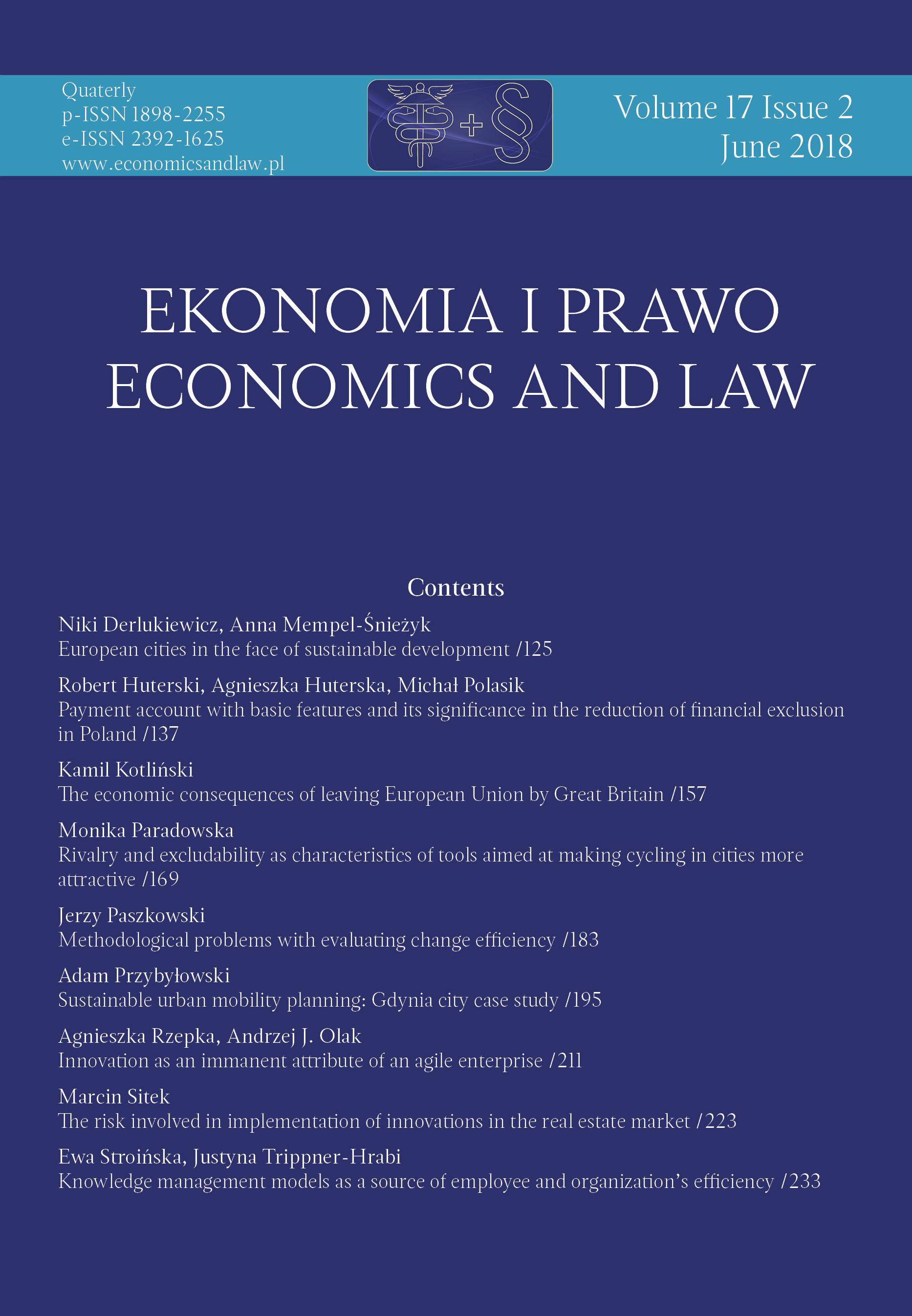Rivalry and excludability as characteristics of tools aimed at making cycling in cities more attractive
Rivalry and excludability as characteristics of tools aimed at making cycling in cities more attractive
Author(s): Monika ParadowskaSubject(s): National Economy
Published by: Wydawnictwo Naukowe Uniwersytetu Mikołaja Kopernika
Keywords: rivalry; excludability; cycling; transport demands; urban transport systems
Summary/Abstract: Motivation: Urban transport systems are complex and sophisticated, while different pas-senger transport modes are more or less attractive, depending on their characteristics and demands of transport users. According to many municipalities, cycling is considered one of the most required ways of commuting, because it generates multiple benefits and low levels of external costs of transport. Thus, many cities try to increase the share of cycling in the modal split by the way of various interventions. Effects of these efforts are different, de-pending on levels of rivalry and excludability of goods provided, which influence the at-tractiveness of cycling. Aim: The main aim of the paper is (1) to describe key elements of and some solutions for cycling systems in urban areas with focus on two characteristics of goods: rivalry and excludability, and (2) to examine, how different levels of rivalry and excludability influence the attractiveness of cycling and contribute to required effects of cycling policy. Results: A change in levels of rivalry and excludability can lead to an in-creased attractive-ness of cycling. Instruments, that play a crucial role, are e.g. separated cycling infrastructure, leading to a (partially) exclusion of other transport users, as well as solutions for eliminating self-exclusion from cycling or exclusion of people with disabilities. Further research on levels of rivalry and excludability in terms of the complexity of transport systems can contribute to a better understanding of transport behaviour. This, in turn, can result in a creation of adequate solutions and it can be useful while estimating future effects.
Journal: Ekonomia i Prawo. Economics and Law
- Issue Year: 17/2018
- Issue No: 2
- Page Range: 169-181
- Page Count: 13
- Language: English

